In most cases, changes in cartilage and bone tissue are observed in people of working age under 40.
The disease affects different parts of the spine. The second most common is osteochondrosis of the cervical spine.
What is?
Osteochondrosis is a degenerative disease of articular cartilage and adjacent bone tissue.
Previously, the term was used for a large number of bone and joint diseases, but now it is only used for spinal degenerative diseases.
Compared with other parts of the spine, the cervical area is the easiest to move and has many nerve and blood vessel structures. The structure of the vertebrae is small and surrounded by a soft muscular corset.
This anatomical structure tends to develop osteochondrosis, and the severity of its clinical manifestations depends on the nature of the changes in the intervertebral disc and the extent of its destruction.
Causes of disease development
A sedentary lifestyle is the main cause of cervical osteochondrosis.
Due to lack of exercise and sedentary and sedentary lifestyle:
- The metabolic process is disturbed; Increased salt content in blood and lymph;
- Salt is deposited in the cervical spine, kidneys and liver.
The damage to the cervical spine is mainly caused by the lack of nutrition in the intervertebral disc. Therefore, the main reasons for cervical osteochondrosis also include inappropriate and unbalanced nutrition.
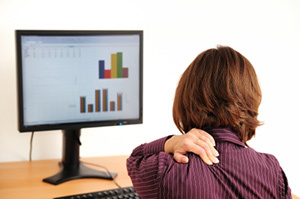
Risk factors
There are many risk factors for cervical osteochondrosis.
The most common factors are:
- Heredity;
- Age-related changes;
- Cervical spine injury;
- Hypothermia;
- Hormonal disorders that cause metabolic disorders;
- Certain autoimmune diseases that damage cartilage tissue (systemic lupus erythematosus, rheumatism).
Why is it dangerous?
Not only does the spinal cord and nerve roots pass through the cervical spine, but the vertebral artery also supplies blood to the brain, medulla oblongata and cerebellum through it.
Therefore, in the case of cervical osteochondrosis, the artery is squeezed and the cerebral circulation is damaged.
In extremely advanced cases, compression of arteries and nearby blood vessels and nerve plexus may cause the following consequences:
- Lack of coordination;
- Hearing and vision loss;
- Stroke.
If the disease cannot be cured at the initial stage, it may cause complications such as: herniated disc or herniated disc.
Disease progression
Cervical osteochondrosis develops in stages like osteochondrosis in other parts of the spine. Disease development is divided into three stages.
1 degree
is characterized by the destruction of intervertebral discs.
Cracks are formed in the annulus fibrosus, the strength and elasticity of the intervertebral disc are disturbed, and the height of the intervertebral disc is reduced, thereby compressing the nerve root.
There is characteristic pain. Sometimes this kind of pain may not appear in the first stage (preclinical), and osteochondrosis may cause moderate discomfort in the neck.
2 degrees
If grade 1 osteochondrosis is not treated or the treatment is ineffective, a chronic disease occurs, namely grade 2 osteochondrosis.
The pain becomes constant, the destruction and compression of the intervertebral disc continue, and the slight dislocation of the cervical spine is caused.
When suffering from cervical osteochondrosis at this stage, drop syndrome may occur. The syndrome is characterized by severe pain, and the person must keep the head fixed to relieve the pain.
3 degrees
Grade 3 cervical chondropathy is accompanied by the following symptoms:
- headache;
- Disgusting;
- dizziness;
- "back pain" in the neck;
- Impaired upper limb sensitivity.
The annulus fibrosus is almost destroyed, leading to the complications of osteochondrosis-herniated disc or hernia.
In the third stage of osteochondrosis, the intensity of pain may decrease because there is no affected cartilage tissue in the intervertebral disc, which means there is no root cause of the pain, but the compression of the nerve root is stillExist, so the pain has not completely disappeared.
Symptoms and signs
There are many signs of this disease. And they depend on which vertebrae are damaged by the disease.
The typical syndrome of cervical osteochondrosis is:
- Root nerve syndrome;
- Vertebral artery syndrome;
- Neck migraine syndrome;
- Hypertension syndrome.
All these syndromes are first accompanied by different types of pain.
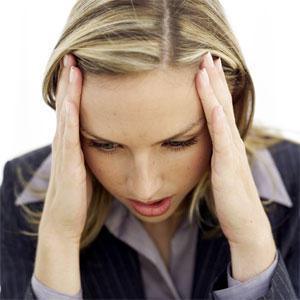
If we consider vertebral artery syndrome, headaches have already manifested in the early stages of disease development.
In this case, the onset of pain may be accompanied by:
- dizziness;
- Unstable gait;
- Visual symptoms (fogging in front of eyes, decreased vision, etc. ). Syncope (sudden head movement).
In hypertensive syndrome, determine the increase in intracranial pressure.
Headaches are more explosive and may be accompanied by nausea and vomiting. As cervical osteochondrosis worsens, an increase in temperature and ESR can be observed.
When spinal nerve roots are compressed ("nerve root syndrome"), the following neurological symptoms may occur:
- Severe neck pain (cervix pain);
- Neck pain spreads to the forearm and humerus (neck-arm pain);
- Arm pain;
- The feeling of cracking or cracking in the neck when turning the head;
- The pain "radiates" to the ear, usually after staying in an uncomfortable position for a long time or after sudden movement;
- Sore or lump in the throat, difficulty breathing;
- Numbness in hands and tongue;
- Feeling of tongue swelling;
- Severe weakness;
- Hearing and visual impairment;
- tinnitus;
- General health conditions have deteriorated.
In the "cervical migraine" syndrome, inflammation of the sympathetic lymph nodes is observed, which leads to decreased cerebrovascular reactivity and impaired blood circulation.
As a result, hypertension may develop, usually accompanied by:
- stuffy ears;
- Tachycardia;
- Head noise;
- rang in my ears.
When the arteries supplying the spinal cord are compressed, a spinal cord stroke may occur.
Violation of the cerebral blood circulation of osteochondrosis can lead to:
- Hypoxia in brain cells;
- Mental disorders (depression, panic attacks);
- Signs of epilepsy, such as short-term loss of consciousness and general tension-they are often confused with signs of epilepsy.
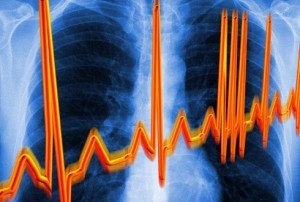
A very common symptom of cervical osteochondrosis is changes and disorders of heart rhythm, such as systole or arrhythmia.
These symptoms are very common among drivers and office workers.
Due to the sedentary lifestyle, the intervertebral discs of the cervical and thoracic spine have changed, which can cause cardiac dysfunction.
In most cases, unless the osteochondrosis is cured, it is almost impossible to get rid of the arrhythmia.
Swelling under the eyes may also indicate cervical osteochondrosis.
In most cases, they depend on the position of the head during sleep at night, disappear during the day, and are accompanied by headaches, dizziness, heavy head, etc.
Vascular vascular dystonia is another common disease that occurs simultaneously with this disease.
This is the result of constricted blood vessels extending along the side of the spine.
Diagnostic methods
The initial diagnosis is established by the neurologist during the initial examination of the patient. Recently, doctors can make a diagnosis only by performing an external examination of the patient and sending him an X-ray examination.
However, unfortunately, it is impossible to see the full picture of the disease development on X-rays.
Currently available, such as computed tomography and magnetic resonance imaging, can comprehensively assess the development stage of the disease.
After a diagnosis is made, refer the patient to a doctor specializing in the field.
Which doctor treats?
Treatment by a specialist in stenosis-a vertebral orthopedist or a vertebral neurologist.
Treatment of cervical osteochondrosis
The severity of the main clinical symptoms is regarded as the basis for the treatment of cervical osteochondrosis.
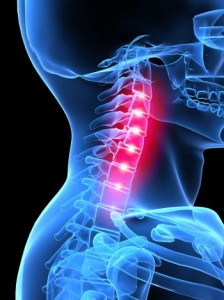
In the cervical spine, the symptoms are mainly related to the squeezing of blood vessels and nerve endings. Therefore, during the treatment period, the edema should be removed first and blood circulation should be restored.
There are many ways to treat cervical osteochondrosis.
The most effective treatment is complicated, which is a combination of several conservative treatments.
Comprehensive treatment of cervical osteochondrosis can include the following traditional and non-traditional methods: medical treatment, massage, acupressure, manual therapy, physical therapy, acupuncture, homeopathy, folk therapy, etc.
The main treatment stages of osteochondrosis are the same in all locations of the disease:
- First, you need to relieve the pain.
- Then the edema will be removed.
- At this stage, it is necessary to normalize blood circulation.
- Muscle-strengthening corset.
- Improve nutrition and tissue regeneration.
Only an excellent team of experts can choose the most appropriate treatment, including neurologists, physical therapists, massage therapists, surgeons and vertebral neurologists.
Like any disease, cervical osteochondrosis should be treated at the earliest stage of its onset. If you do not start the process, osteochondrosis can be completely cured at this stage.
Unfortunately, the second and third stages of cervical osteochondrosis are accompanied by complete or partial destruction of the intervertebral disc. Therefore, these stages are characterized by a very long recovery process.
First Aid
How to relieve pain during exacerbation?
If you experience severe pain, you need to take out painkillers from your home medicine cabinet: these can relieve pain. You can also use pepper paste to relieve pain.
If swelling occurs, you can take diuretics. Rubbing the neck with a pain-relieving ointment may help.
You can also use theneedle applicatorto relieve pain, it is:
- Relieve back pain;
- Reduce muscle cramps;
- The work of stimulating the internal organs;
- Normalize blood circulation.
Physiotherapy in the acute exacerbation phase is contraindicated and will increase the temperature because these effects can cause serious complications.
After the acute pain is relieved, it is necessary to consult your doctor urgently for advice.
Medications
In most cases, medications start with injections (such as exacerbations), and then combine topical ointments and gels with tablets and suppositories.
Anesthesia during medication is performed with steroid anti-inflammatory drugs.
Medicines to restore cerebral circulation must be prescribed.
Muscle relaxants can be used for pathological muscle tension. For more effective treatment, vitamins should be taken in therapeutic doses and trace elements.
In the case of intervertebral hernia, surgical intervention is usually recommended, and the attending doctor may recommend surgery.
Massage and self-massage
This method is suitable for physical therapy and physical therapy. You can take a massage course at any medical institution or by contacting a private clinic.
Neck osteochondrosis requires massage to strengthen muscles and reduce neck pressure.
The task of the masseur is to remove harmful metabolites by increasing the blood outflow and inflow of the diseased area, as well as to remove the spasm in the pathological area.
The main techniques used by neck massage specialists are:
- Stroking;
- squeeze;
- friction;
- Vibration;
- Kneading.
The following techniques can be used to perform self-massage techniques:
- Stroking (the movement should be gentle, not laborious, forming folds)
- Kneading (by gripping the folds, pressing and pushing to produce a deep impact on the muscles);
- Vibration (vibration shock caused by hitting, shaking, percussion).
Self-massage should always end with a light stroke. During the vibration, you can use the massager.
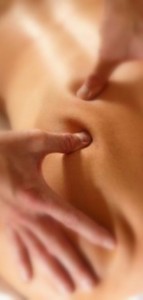
Shiatsu massage
Acupoint massage can relieve headaches and aggravate cervical chondropathy, helping to increase the pressure and restore it to normal.
Acupoint massage program:
- The effect on the abundance point located below the occipital protrusion lasts for 1 minute.
- The effect on the wind pool point, the wind pool point is about two fingers from the mastoid of the skull.
- Hit the ya gate (the distance between three fingers from Fengfu Point) for 1-1. 5 minutes.
- Sedate for 1-1. 5 minutes on the Dazhui point (7th cervical vertebra).
After acupressure, you need to lie down for a few minutes because you may feel a little dizzy.
Manual therapy
Manual therapy helps to cope with acute and chronic pain. It can also increase the range of motion and improve posture.
The main method of manual treatment of cervical osteochondrosis:
- Relaxing massage and segmented massage.Used to heat muscles and relieve tension.
- Mobilize.Designed to restore the effects of joint function through traction.
- manipulation.Push violently to the pathological part of the patient. This process is accompanied by a characteristic crunch (the joint returns to its normal position).
Experts in manual therapy should be proficient in these techniques. Otherwise, any error may cause injury.

Acupuncture
Acupuncture promotes the release of cortisol into the blood. This hormone has obvious anti-inflammatory effects.
Acupuncture is performed by acting on points near the inner edge of the shoulder cap bone. Insert the needle to a depth of 1 to 2 cm and allow it to act for 10 to 30 minutes.
Homeopathy
Drug therapy has many undesirable side effects, so homeopathy can replace treatment without adverse consequences.
Nutritional characteristics
Food should be rich in calcium and magnesium.
These trace minerals are found in fish and seafood, nuts, beans and dairy products.
Usually, cervical osteochondrosis can be accompanied by atherosclerosis. In this case, strict diet is recommended.
The diet is prescribed for 3-4 months. It is necessary to limit the consumption of all cholesterol-containing foods. These include animal fat, fatty meat, fatty dairy products, etc. You should also limit or exclude the consumption of salt, sugar, and flour products.
It is recommended to give up bad habits (smoking, alcoholism, etc. ).
Cervical osteochondrosis and alcohol are related to each other. The fact is that the entry of alcohol into the blood will destroy the cells, thereby exacerbating the already damaged blood circulation in osteochondrosis.
Therefore, it should be restricted to the lowest level and alcohol consumption should be completely stopped during the worsening period.
Disease prevention
To prevent cervical osteochondrosis, it is recommended to follow the following rules:
- Sleep should be on a firm mattress and low pillow: the neck flexion angle should not exceed 15 degrees;
- Wash at least 10 minutes a day;
- Go to the sauna and bathroom as often as possible: heat helps relieve neck cramps;
- Perform aerobic exercise and maintain a low speed and regular walking;
- Go swimming;
- After 25 years, avoid applying shock loads (jumping, running) to the spine;
- When sitting for a long time, make sure to rest for five minutes every hour;
- Regular yoga practice can prevent any manifestations of cervical osteochondrosis;
- Don't go to the gym, because bodybuilding may cause the cervical disc to herniate.
- Physical exercise can prevent neck osteochondrosis, help strengthen neck muscles and relieve tension.
Frequently Asked Questions
What should I do during pregnancy? How to treat?
Usually, the first symptoms of cervical osteochondrosis appear during pregnancy.
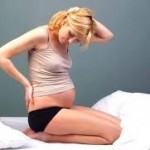
This is due to changes in hormone levels and softening of the vertebrae, as well as the movement of the center of gravity and excessive pressure on the spine.
The treatment of osteochondrosis in pregnant women is quite complicated because it is mainly limited by medications designed to relieve pain.
You can use natural ointments or resort to traditional medicine.
It is strictly forbidden to have any influence on the neck during pregnancy (warm-up, exercise, etc. ).
Does it happen in children and adolescents?
In children and adolescents, cervical osteochondrosis develops due to congenital or acquired insufficiency of cartilage tissue.
means headache, fatigue, dizziness and fainting.
Can the neck be heated?
It is strictly forbidden to use cervical osteochondrosis to heat the neck, especially in the exacerbation stage, because warming will lead to increased cerebral edema and vasodilation.

How to fall asleep correctly?
Sleep on a flat hard bed with an orthopedic mattress.
The recommended most comfortable position is to lie on your side with your shoulders on the mattress and your head on a small pillow.
Using orthopedic pillows can help relax the muscles of the cervical spine and reduce the stimulation of nerve endings, thereby preventing headaches and insomnia.
Can I do physical exercise and sauna?
In the first stage of preventive measures and cervical osteochondrosis, it is recommended to practice physical therapy, swimming.
It is strictly forbidden to lift weights, work hard, and train in the gym.
It is also recommended to go to bathhouses and saunas only to prevent cervical osteochondrosis and the initial stage of the disease.
Comments
"I want to share with my unfortunate brothers how to treat cervical osteochondrosis. A few years ago, I suffered from backache. I went to the doctor and diagnosed cervical osteochondrosis. Many methods have been tried in the treatment: physical therapy, manualTherapy and massage. But in general there is only temporary relief, all of which are very expensive procedures. I had to thoroughly research this problem. So I decided to try swimming. It turns out that swimming is widely used to prevent and treat the cervixOsteochondrosis, because it can significantly relieve the tension of the neck muscles. Once a week in the swimming pool and sad not knowing
"Due to overwork, I couldn't find time to see the doctor. My relatives suggested that I treat neck pain through warm-up, herbal dressings, ointments, various methods and other home remedies. My neck stopped moving at all! I lay at home for more than two weeks and even recovered for a long time. Therefore, my advice to everyone is to see a doctor if you have a sprained neck! This way you can save time without losing your health. ”

























